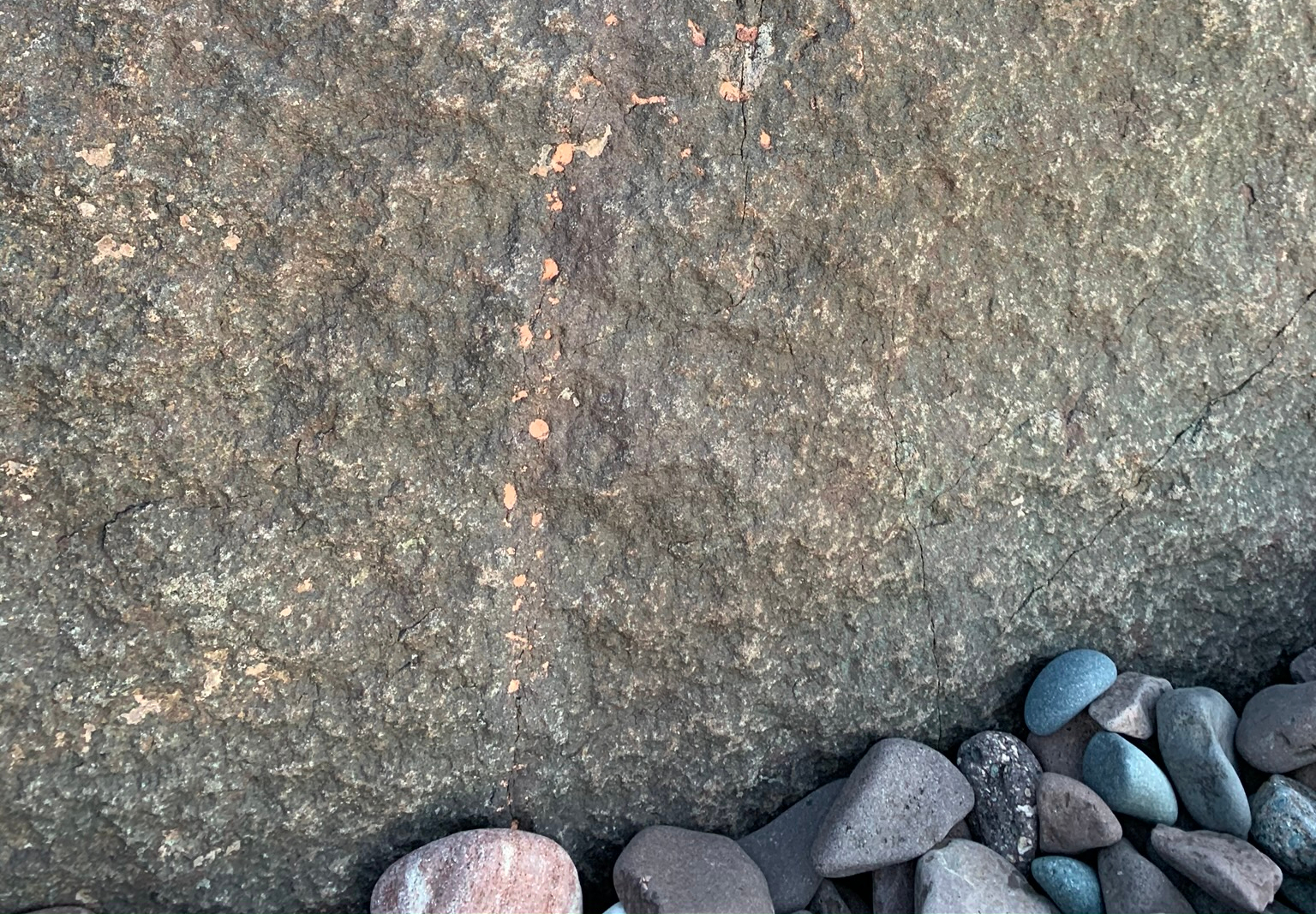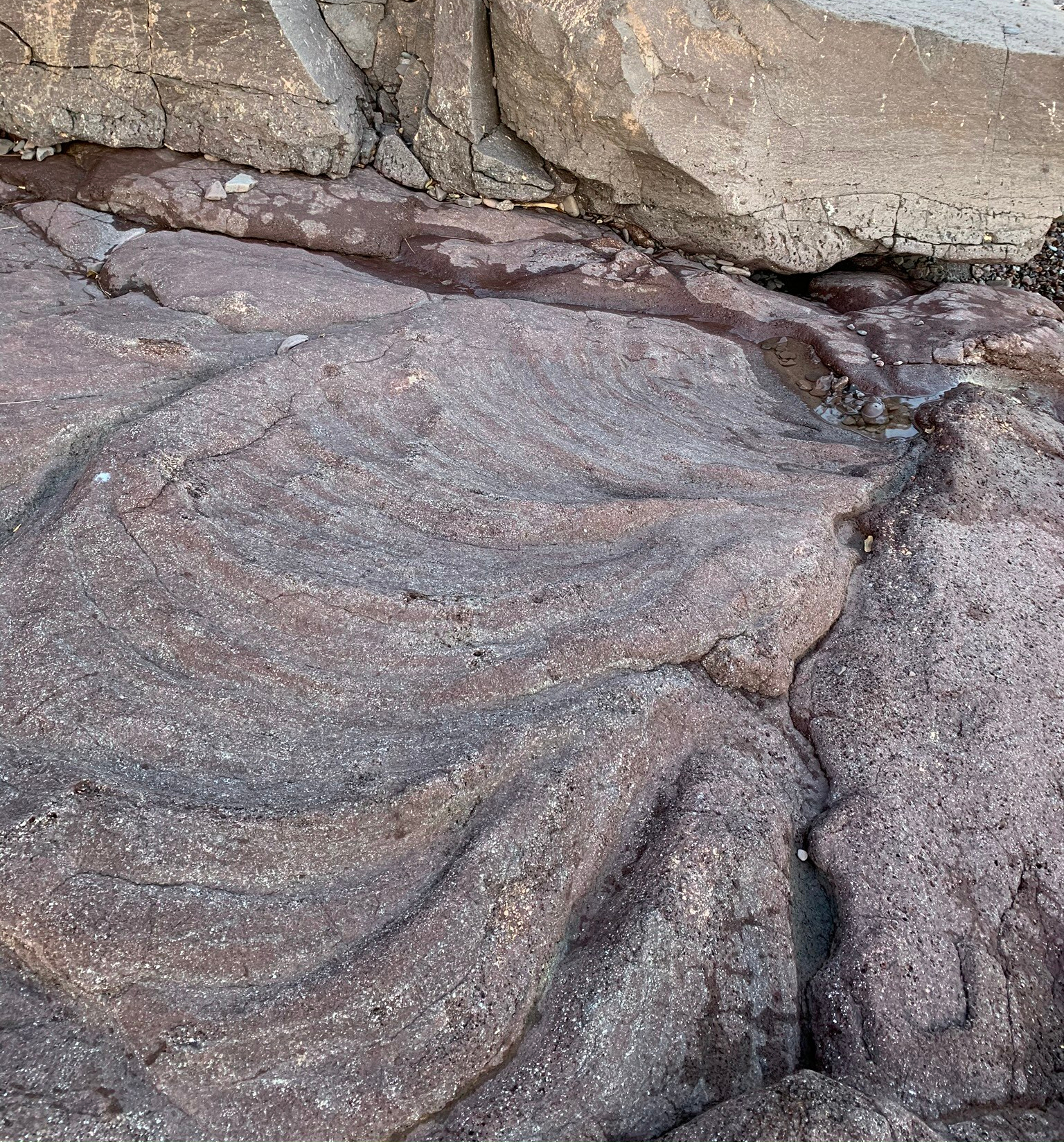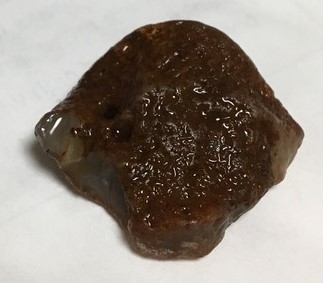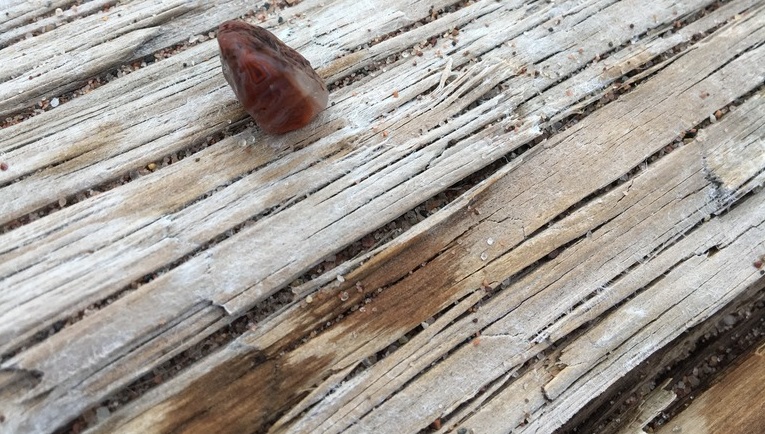This weekend we got a blessing of fall weather! Yesterday got into the mid-40’s, and today was 50°F! So, that ice finally melted off the ledges and I could get all the way out. To follow along with the stop description, check out the book share in the previous post Stop 4 (p. 135). Instead of the direction to get to the starting place, I like to make my way there from the parking place. I think the starting place is also what’s referred to as “the southwest end of the wider part of the ledges.” In my amateur geology learning adventure, this is my best guess at interpreting this stop.

I can see what looks like a basalt dike, but wading out there will have to wait until summer 2020. The next sentence is unclear as to whether the sandstone lenses are there or “here” where the overlying basalt flow contacts the rhyolite flow.

I’m assuming this is the massive portion without amygdules.

Given the diagram (Fig. 11 A, p. 131) I think this is a vesicle cylinder.

This is the part I feel the most confident in interpreting, and it’s one of my favorite spots! Above the pahoehoe top of the flow is the contact with another flow. This is the best example of pipe vesicles I’ve ever found, with what I believe are vesicle cylinders above in the massive portion!

This is again where I prefer to climb down to get to all these spots.


 I’ve found quite a few agates and fragments by now, most of them predictably small. I might need more mag to get at the features on the tiny ones. I’d love to find (or confirm among my collection) a
I’ve found quite a few agates and fragments by now, most of them predictably small. I might need more mag to get at the features on the tiny ones. I’d love to find (or confirm among my collection) a 